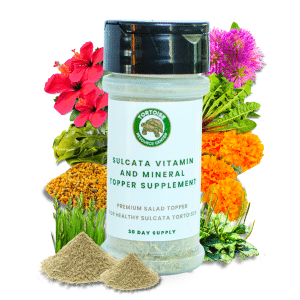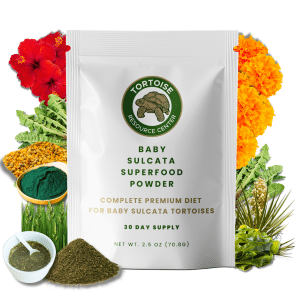The Greek tortoise (Testudo graeca), also known as the Spur-Thighed Tortoise, are a species of tortoises that can live for over 100 years, in fact, the oldest Greek tortoise lifespan is recorded at the age of 127 years.
They are found across North Africa, southern Europe, and southwestern Asia, where they live near grasslands, forests, and savannahs.
These tortoises have blunt heads with large eyes, and their front legs have large scales and thick, powerful claws – perfect for digging and foraging. They have yellow to gold and dark brown or black shells with rays, flecks spots, and borders.
Keep reading to learn more about both wild and captive Greek tortoise lifespans, plus factors that can affect their longevity that may prevent them from living a long and healthy life.
Factors Influencing Lifespan of Greek Tortoise
As I’ll explain below, there are environmental, genetic and health factors that can all play a crucial role in the lifespan of Greek tortoises. In the wild, they face numerous challenges like predators, food shortages, and harsh conditions, all of which can impact their survival.
As pets, their ideal habitat conditions must be replicated to provide proper care. This includes sufficient space, lighting, heat, and humidity, all of which are essential to prevent health issues and ensure longevity.
Environmental Impact
Environmental conditions play a large part in the life expectancy of all tortoise species. For example, in the wild they face many challenges including predators, shortage of food, and harsh environmental conditions like hot temperatures and drought. All of which can impact their quality of life and chances of survival.
But when you care for a Greek tortoise as a pet in your home, you are in control of its world. As a responsible owner you must provide them with adequate space to enable them to move freely (just like in the wild) and ensure they have sufficient lighting to facilitate vitamin D3 synthesis, and heat and maintain appropriate temperature gradients to support their thermoregulation.
An insufficient environment, caused because of poor husbandry can incite health issues like metabolic bone disease, respiratory issues, and a lack of proper hibernation cycles that can disturb their natural rhythms and worse case, hinder their life expectancy.
Genetic and Health Factors
Genetic factors tend not to be as well-studied in Greek tortoises as in some other long-lived species, such as giant tortoises. Giant tortoises are known to have DNA repair genes, immune function genes that reduce inflammation metabolism genes, and tumor suppressor genes that increase their longevity.
While there are no such genetic studies available in Greek tortoises, as members of the same order (Testudines), they likely share some genetic traits that can enhance their lifespan.
It’s important to note that the Greek tortoise is comprised of more than 12 subspecies. Some subspecies, such as the Asia Minor tortoise (Testudo graeca ibera), are known for their hardiness and resilience, while others, like the Tunisian spur-thighed tortoise (Testudo graeca nabeulensis), are more delicate and can get diseases easily.
For example, they are highly susceptible to ‘alien’ pathogens, particularly those causing ‘Runny Nose’ syndrome.
Additionally, they are more vulnerable to shell rot, and metabolic bone disease (MBD) compared to other tortoise species. However, this may be a result of both genetic and environmental factors.
Common Health Issues
Greek tortoises, like all living creatures, are susceptible to health problems that can affect their lifespan. Some common health issues include:
Respiratory infections
These are caused by Mycoplasma, a type of bacteria, that is most common in wild adult Greek tortoises, especially in the subspecies of Mesopotamian tortoises (Testudo graeca terrestris). Clinical signs and symptoms include runny nose, wheezing, or difficulty breathing.
To prevent respiratory infections, owners must maintain a clean and dry environment, avoid overcrowding, and provide proper ventilation. Treatment requires antibiotics and usually an adjustment to their environmental conditions.
Parasitic Infections
Greek tortoise can be prone to ticks and mites which can be hard to treat. Common signs are weight loss, lethargy, and changes in appetite or stool consistency. Your veterinarian will need to perform a faecal examination to detect the specific type of parasite and treat these infections accordingly.
Are You Starving Your Tortoise?
Save 10% on premium tortoise food and supplements from Tortoise Resource Center on Amazon now using code BUYNOWGET10

Sulcata Vitamin & Mineral Topper Supplement
30-Day Supply | 2 oz (56 g)
$24.99

Baby Sulcata Tortoise Superfood Powder
30-Day Supply | 2.5 oz (70.8 g) Bag
$24.99
Herpesvirus
Greek tortoises are known carriers of herpesviruses. The virus can remain dormant in their bodies and may only become apparent if your tortoise becomes stressed or ill. Diagnosis is usually confirmed via a veterinarian through lab tests and is treatable with antiviral drugs and antibiotics.
The virus is highly contagious, so owners need to test new tortoises for the virus before introducing them to other pets. Additionally, if the virus is detected, owners must follow strict hygiene practices and isolate infected tortoises from other reptiles to prevent cross-contamination.
The prognosis for tortoises with herpesvirus can vary. Some may live with the virus with proper management, while others may succumb to the disease.
Shell rot
Shell rot is caused by a bacterial or fungal infection that results in softening, discoloration, or even pitting of the shell.
Owners can prevent this by maintaining a clean and dry environment and avoiding injuries to the shell. Treatment involves first understanding the underlying cause then cleaning the affected area and applying topical medications until a full recovery is made.
Metabolic bone disease
MBD is a condition that is caused by an imbalance of calcium and phosphorus in the body that results in weak bones and deformities.
The disease can be avoided by providing a balanced diet with adequate calcium and exposure to natural sunlight or UVB lighting.
Captivity vs Wild Lifespan
The longevity of the Greek tortoise species is largely dependent on their habitat and whether they are living in the wild or in captivity.
For example, in their natural habitats, Greek tortoises are unlikely to live beyond 30 years of age due to predation (foxes, wolves, birds of prey, and even larger reptiles), shortage of food, diseases, and harsh environmental conditions like extreme heat, cold, or drought.
Greek tortoises are also listed as vulnerable by the IUCN list of threatened species. This is a result of illegal pet trading and human activities that cause their decline. For this reason, it becomes difficult to calculate their average lifespan in the wild accurately.
In contract, when provided proper care in captivity, Greek tortoises can enjoy an average lifespan of up to 100 years, with some individuals reaching 127 years or more. This is only possible due to the absence of predators, having an adequate supply of food and water, and excellent husbandry whereby light, temperature and humidity are kept at optimal conditions.
Enhancing Your Tortoise’s Lifespan
In addition to ensuring that your pet tortoise has proper environmental conditions, owners can enhance the longevity of their Greek tortoise by implementing the following practices:
1. Provide a Suitable Habitat
Ensure the tortoise has adequate space to roam and explore, and thus an opportunity to mimic their natural environment.
The enclosure should be at least a 4×4 foot or 10 times the size of an adult tortoise. It should also contain a substrate about 4-6 inches deep. Cypress mulch, coconut fiber, and a 50/50 mixture of topsoil and play sand are considered the best substrates.
The best option is an outdoor enclosure where your tortoise gets natural sunlight, fresh air, and a large space for movement and exploration. But, if outdoor housing is not possible due to climate conditions or local regulations in some states an indoor enclosure is the best alternative.
The enclosure should provide a temperature gradient, with a basking area of 90-95°F and a cooler end around 70-75°F. Humidity should be around 65-70%.
2. Balanced Diet
Greek tortoises are herbivores, that’s why they require a nutrient-dense diet. They eat a variety of grasses, weeds, flowers, and leafy greens in the wild.
And same as in captivity you should have to give them 80% dark, leafy greens like kale, collard greens, and dandelion greens plus grasses and hay. The remaining 20% can include other vegetables, fruits, and grasses.
Always supplement their meal with calcium and vitamin D3 powder to prevent metabolic bone disease and provide them with a shallow water dish for drinking and soaking.
3. Regular Veterinary Check-ups
Keep an eye on your tortoise’s health, if you see any signs like lethargy, loss of appetite, respiratory distress, and shell abnormalities, contact your veterinarian immediately.
In addition, schedule regular visits to a reptile-experienced veterinarian to monitor your tortoise’s health and catch any issues early.
As a responsible owner it is your job to manage a preventative care schedule by keeping up with de-worming and regular weigh-ins to avoid common health problems like parasitic infections and respiratory diseases.
4. Maintain Clean and Hygienic Conditions
Daily spot cleaning of soiled substrate and leftover food, plus bi-monthly deep cleaning of their enclosure is fundamental to the health and well being of your pet tortoise. In addition, they need fresh water daily, all of which will help to prevent bacterial and fungal infections.
Citations
- Researchgate.net – Giant Tortoise Genomes
- Inaturalist.net – Greek Tortoise Testudo graeca
- Reptile-database.org – IUCNRedlist Testudo graeca
- Tortoisetrust.org – Testudo graeca graeca


